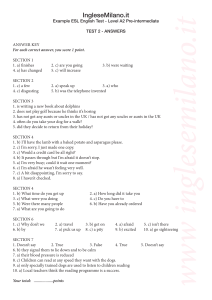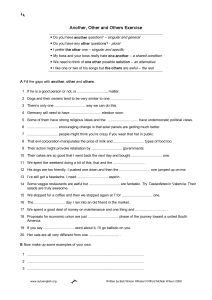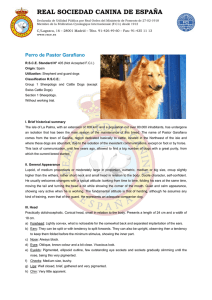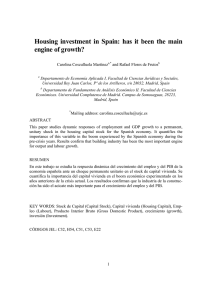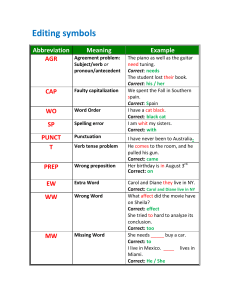Learned Helplessness: Causes, Effects & Cure | Seligman's Research
Anuncio
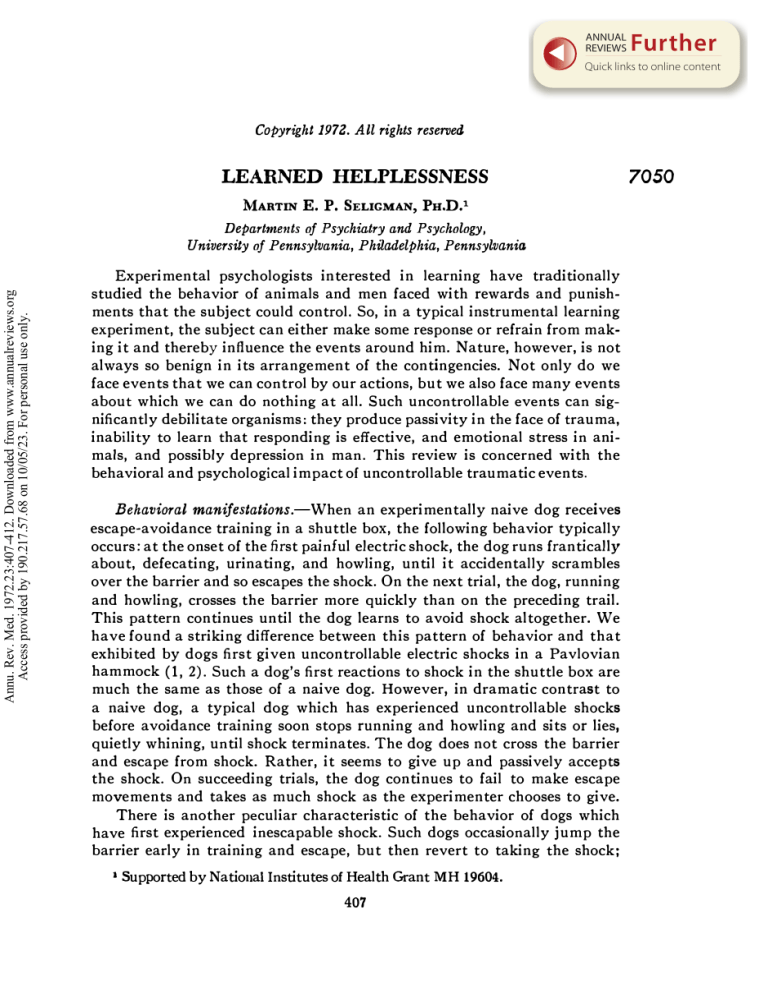
ANNUAL REVIEWS Further Quick links to online content Copyright 197Z. All rights reserved LEARNED HELPLESSNESS MARTIN E. P. SELIGMAN, PH.D.1 Annu. Rev. Med. 1972.23:407-412. Downloaded from www.annualreviews.org Access provided by 190.217.57.68 on 10/05/23. For personal use only. Departments of Psychiatry and Psychology, University of Pennsylvania, Philadelphia, Pennsylvania Experimental psychologists interested in learning have traditionally studied the behavior of animals and men faced with rewards and punish­ ments that the subject could control. So, in a typical instrumental learning experiment, the subject can either make some response or refrain from mak­ ing it and thereby influence the events around him. Nature, however, is not always so benign in its arrangement of the contingencies. Not only do we face events that we can control by our actions, but we also face many events about which we can do nothing at all. Such uncontrollable events can sig­ nificantly debilitate organisms: they produce passivity in the face of trauma, inability to learn that responding is effective, and emotional stress in ani­ mals, and possibly depression in man. This review is concerned with the behavioral and psychological impact of uncontrollable traumatic events. Behavioral manifestations. When an experimentally naive dog receives escape-avoidance training in a shuttle box, the following behavior typically occurs: at the onset of the first painful electric shock, the dog runs frantically about, defecating, urinating, and howling, until it accidentally scrambles over the barrier and so escapes the shock. On the next trial, the dog, running and howling, crosses the barrier more quickly than on the preceding trail. This pattern continues until the dog learns to avoid shock altogether. We have found a striking difference between this pattern of behavior and that exhibited by dogs first given uncontrollable electric shocks in a Pavlovian hammock (1, 2). Such a dog's first reactions to shock in the shuttle box are much the same as those of a naive dog. However, in dramatic contrast to a naive dog, a typical dog which has experienced uncontrollable shocks before avoidance training soon stops running and howling and sits or lies, quietly whining, until shock terminates. The dog does not cross the barrier and escape from shock. Rather, it seems to give up and passively accepts the shock. On succeeding trials, the dog continues to fail to make escape movements and takes as much shock as the experimenter chooses to give. There is another peculiar characteristic of the behavior of dogs which have first experienced inescapable shock. Such dogs occasionally jump the barrier early in training and escape, but then revert to taking the shock; - 1 Supported by National Institutes of Health Grant MH 19604. 407 7050 Annu. Rev. Med. 1972.23:407-412. Downloaded from www.annualreviews.org Access provided by 190.217.57.68 on 10/05/23. For personal use only. 408 SELIGMAN they fail to learn that barrier-jumping produces shock-termination. In naive dogs, however, a successful escape response is a reliable predictor of future, short-latency escape responses. The escape-avoidance behavior of over 150 dogs which had received prior inescapable shocks has been studied. Two-thirds of these dogs do not escape; the other third escape and avoid in normal fashion. It is obvious that failure to escape is highly maladaptive since it means that the dog takes 50 seconds of severe, pulsating shock on each trial. In contrast, only 6 percent of ex­ perimentally naive dogs fail to escape in the shuttle box. So, any given dog either fails to escape on almost every trial or learns normally. We use the term "learned helplessness" to describe the interference with adaptive responding produced by inescapable shock and also as a shorthand to describe the process which we believe underlies the behavior (see Etiology). The phenomenon seems widespread, and such interference has been reported in dogs by a number of investigators (3-8). Nor is it restricted to dogs: deficits in instrumental responding after experience with uncontrollable shock has been shown in rats (9-20), cats (21), fish (22-24), mice (25), and men (26-27). Inability to control trauma not only disrupts shock escape in a variety of species, but also interferes with a range of adaptive behaviors. Rats that receive inescapable shocks initiate less pain-elicited aggression toward other rats (28), are slower to learn to swim out of a water maze (29) as are mice (25), and are poorer at food-getting behavior in adulthood when very hungry (17). Situations -involving uncontrollable events other than shock can pro­ duce effects which may be related to failure to escape shock: Escape deficits can be produced by inescapable tumbling (30), passivity following defeat in fighting (31), "sudden death" following defeat (32) or restraint (33), and retardation in learning to bar press for food following uncontrollable food (34). In addition to impairing voluntary responding, uncontrollable shock produces more stress than controllable shock as measured by behavioral suppression (37-39), by defecation and conditioned fear (35), and by sub­ jective report (40). Finally, more weight loss, anorexia, and whole brain norepinephrine depletion is found in rats experiencing uncontrollable as opposed to controllable shock (35, 36, 41). In summary, experience with uncontrollable trauma typically has three basic effects: (a) animals become passive in the face of trauma, i.e., they are slower to initiate responses to alleviate trauma and may not respond at all; (b) animals are retarded at learning that their responses control trauma, i.e., if the animal makes a response which produces relief, he may have trouble "catching-on" to the response-relief contingency; and (c) animals show more stress when faced with trauma they cannot control than with equivalent controllable trauma. This maladaptive behavior appears in a variety of species including man, and over a range of tasks which require voluntary responding. Annu. Rev. Med. 1972.23:407-412. Downloaded from www.annualreviews.org Access provided by 190.217.57.68 on 10/05/23. For personal use only. LEARNED HELPLESSNESS 409 Etiology.-It is commonly accepted that animals can learn that respond­ ing controls rewards and punishments. We believe that animals are also sensitive to the independence of responding and reinforcers, and can learn that events are uncontrollable as well as controllable. The three main effects of uncontrollable trauma are explained by postulating such a form of learn­ ing: 1. Response initiation. The probability that the subject will initiate re­ sponses to escape is lowered because part of the incentive for making such responses is the expectation that they will bring relief. If the subject has previously learned that its responses have no effect on trauma, this contra­ venes such an expectation. 2. Retardation of learning. Learning that responding and shock are inde­ pendent makes it more difficult to learn that responding does produce relief, when the subject makes a response which actually terminates shock. In general, if one has acquired a "cognitive set" in which A's are irrelevant to B's, it will be harder for one to learn that A's produce B's when they do. By the helplessness hypothesis, this mechanism is responsible for the difficulty that helpless dogs have in learning that responding produces relief, even after they respond and successfully turn off shock. 3. Emotional stress. Learning that trauma is uncontrollable may produce more stress than learning that it is controllable. Thus, we have hypothesized that it is not shock per se but only uncon­ trollable shock that produces failure to escape (42,43). We have tested and confirmed this hypothesis in several ways. We began by ruling out alternative hypotheses: It is unlikely that our dogs have either become adapted (and therefore not motivated enough to escape shock) or sensitized (and therefore too disorganized to escape shock) by pretreatment with shock; for making the shock very intense or very mild in the shuttle box does not attenuate the phenomenon. Further, it is unlikely that the dogs have learned by explicit or superstitious reinforcement or punishment during inescapable shock, a motor response pattern which competes with barrier jumping in the shuttle box; for interference occurs even if the dogs are paralyzed by curare and can make no overt motor responses during shock (42, 43). Two direct tests of the hypothesis have been performed. If the dog has either an active panel pressing response (2) during shock in the hammock or even the passive response of standing still (7) as instrumental acts which turn off shock, he is later not helpless in the shuttle box. So, one cause of learned helplessness seems to be learning that reinforcers cannot be controlled. Cure.-Only one treatment seems to cure helplessness in dogs. By our hypothesis, the dog does not try to escape because he expects that no in­ strumental response will produce shock termination. By forcibly exposing the dog to the fact that responding produces reinforcement this expectation Annu. Rev. Med. 1972.23:407-412. Downloaded from www.annualreviews.org Access provided by 190.217.57.68 on 10/05/23. For personal use only. 410 SELIGMAN' should be changed. When "directive therapy" is used and helpless dogs are dragged with long leashes from side to side in the shuttle box, so that chang­ ing compartments terminates shock, all dogs eventually begin to respond on their own (5). The recovery from helplessness is complete and lasting, and this finding has been replicated with over two dozen helpless dogs. The behavior of animals during "leash pulling" is noteworthy. At the beginning of the procedure, a good deal of force has to be exerted to pull the dog across the center of the shuttle box. Less and less force is needed as training progresses. A stage is typically reached in which a slight nudge of the leash will drive the dog into action. Finally, each dog initiates his own response, and thereafter failure to escape is very rare. The initial prob­ lem seems to be one of "getting going." Prevention.-Dramatic successes in medicine have come more frequently from prevention than from treatment, and I would hazard a guess that inoculation and immunization have saved many more lives than cure. Sur­ prisingly, psychotherapy is almost exclusively limited to curative procedures, and preventative procedures rarely play an explicit role. In our studies of dogs we found that behavioral immunization provided an easy and effective means of preventing learned helplessness. Dogs that first received escapable shocks either in the shuttle box (2) or in the hammock (44) and then in­ escapable shock in the hammock, learn later to escape and avoid in the shut­ tle box, while dogs that receive yoked inescapable shock fail to escape. Other findings support the idea that experience in controlling trauma may protect organisms from the helplessness caused by inescapable trauma. Among dogs of unknown history, helplessness is a statistical effect: Approxi­ mately two-thirds of dogs given inescapable shock become helpless, while one-third respond normally. Six percent of naive dogs are helpless in the shuttle box without any prior experience with inescapable shock. Could it be possible that those dogs which do not become helpless even after ines­ capable shock have had a prelaboratory history of controllable trauma while dogs who are helpless without any previous shock have experienced uncontrollable trauma before arriving at the lab? To test this, we raised dogs from weaning in individual cages in the laboratory, and these dogs have very limited experience controlling anything, relative to dogs of unknown history. Such cage-reared dogs are more susceptible to helplessness. While it took four sessions of inescapable shock to produce helplessness one week later in dogs of unknown history, two sessions of inescapable shock in the hammock were sufficient to cause helplessness in the cage-reared dogs (8). In this regard, we should mention the dramatic findings on sudden death in wild rats (33). When wild rats are squeezed in the human hand until they stop struggling, then placed in a water tank, they drown suddenly. Unlike nonsqueezed rats which swim for 60 hours before drowning, these rats dive to the bottom and drown within 30 minutes. Sudden death is prevented by a technique which resembles our immunization procedure: If the experimenter holds the rat, then lets it go, holds it again and lets it go, sudden death does LEARNED HELPLESSNESS 411 Annu. Rev. Med. 1972.23:407-412. Downloaded from www.annualreviews.org Access provided by 190.217.57.68 on 10/05/23. For personal use only. not occur. Further, if, after holding it, he puts the rat in the water, takes it out, puts it in again and rescues it again, sudden death is prevented. These procedures, like our own, may provide the rat with a sense of control over trauma and thereby immunize against sudden death caused by inescapable trauma. Depression.-Since most of the investigations of uncontrollable trauma have used infra-humans, we can only speculate on the relationship of learned helplessness in animals to maladaptive behaviors in man. The phenomenon of human depression, particularly reactive depression, has a number of parallels to the phenomenon of learned helplessness (45). Like learned help­ lessness, depression is characterized by reduced response initiation as well as a "negative cognitive set"-difficulty in believing or learning that ones own responses will succeed even when they do (46-50). In a factor analytic study of the symptoms of depression, a factor including feelings of hopeless­ ness, helplessness, and worthlessness has been characterized as the essence of depression (46). It is also of interest that the norepinephrine depletion produced by uncontrollable shock (41) parallels the catecholamine hypothe­ sis of affective disorders (51) which holds norepinephrine depletion to be responsible for human depression. Several recent theorists have postulated that learning and believing that one is helpless and hopeless is the central psychological cause of depression (52-54) and this articulates well with the etiology of learned helplessness. Finally, successful psychotherapy in de­ pression, like therapy for learned helplessness, may involve having the pa­ tient come to believe that he can be effective in controlling the events that are important to him, and recent evidence lends support to this view (55-58). A caveat is in order, however: since most of the evidence for depression is largely anecdotal and selected, experimental tests in man on the helplessness theory of depression are needed. ACKNOWLEDGMENT The author thanks Kirsten R. Seligman for her comments on the manu­ script. LITERATURE CITED 1. Overmier, J. B., Seligman, M. E. P. 1967. J. Compo Physioi. Psychol. 63:28-33 2. Seligman, M. E. P., Maier, S. F. 1967. J. Exp. Psychol. 74:1-9 3. Carlson, N. J., Black, A. H. 1957. Can. J. Psychol. 14:21-28 4. Leaf, R. C. 1964. J. Camp. Physiol. Psycho!. 58:446-49 5. Seligman, M. E. P., Maier, S. F., Geer, J. H. 1968.J. Abnorm.Soc. Psychol. 73:256-62 6. Overmier, J. B. 1968. J. Exp. Psychol. 78:340-43 7. Maier, S. F. 1970. Learning Motiv. 1: 157-70 8. Seligman, M. E. P., Groves, D. P. 1970. Psychon. Sci. 19:191-92 9. Mowrer, O. H. 1940. J. Abnorm. Soc. Psychol.35:56-87 10. Dinsmoor, J., Campbell, S. L. 1956. Psychol. Rep. 2 :34-49 11. Dinsmoor, J., Campbell, S. L. 1956. Psychol.Rep.2:441-44 12. Dinsmoor, J. 1958. Psychol. Rep. 4: 531-34 13. Brown, J., Jacobs, A. 1949. J. Exp. Psychol. 39:747-59 Annu. Rev. Med. 1972.23:407-412. Downloaded from www.annualreviews.org Access provided by 190.217.57.68 on 10/05/23. For personal use only. 412 SELIGMAN 14. Mullin, A. D., Mogenson, G. J. 1963. Psychol. Rep. 13:707-10 15. Weiss, J. M., Krieckhaus, E. E., Conte, R. 1968. J. Compo Physiol. Psychol. 65:413-21 16. Cohen, P. S., Looney, T. A. 1971 . Inter­ ference Effects of Noncontingen' Shocks upon Subsequent Acquisition of Escape Responding in a Jump-up Box. Presented at the Eastern Psychological Association, New York. 17. Brookshire, K. H., Littman, R. A., Stewart, C. N. 1961. Psychol. Monogr. 75:10 Whole No. 514 18. Levine, S., Chevalier, J., Korchin, S. 1956. J. Pers. 24:475-93 19. Dennenberg, V. H., Bell, R. 1960. Sci­ ence 131:227-28 20. Dennenberg, V. H. 1964. Psychol. Rep. 14:43-46 21. Seward, J., Humphreys, G. L. 1967. J. Compo Physiol. Psychol. 63:338-41 22. Behrend, E. R., Bitterman, M. E. 1963. J. Exp. Anal. Behav. 13:229-42 23. Pinckney, G. A.1967. Psychol. Rep. 20: 71-74 24. Padilla, A. M., Padilla, C., Ketterer, T., Giacalone, D. 1970. Psychon. Sci. 20:295-96 25. Braud, W., Wepmann, B., Russo, D. 1969. Psychon. Sci. 16:154-55 26. MacDonald, A. 1946. J. Exp. Psycho I. 36:1-12 27. T hornton, J. W., Jacobs, P. D. 1971. J. Exp. Psychol. 87:367-72 28. Powell, P. A., Creer, T. L. 1969. J. Compo Physiol. Psychol. 69:219 29. McCulloch, T. L., Bruner, J. S. 1939. J. Psychol. 7:333-36 30. Anderson, D. C., Paden, P. 1966. Psychon. Sci. 4:129-30 31. Kahn, M. W. 1951. J. Genet. Psychol. 79:117-30 32. Ewing, L. S. 1967. Science 155:1035-36 33. Richter, C. 1957. Psychosom. M ed. 19: 191-98 34. Seligman, M. E. P., Testa, T., Meyer, B. Submitted for publication 35. Weiss, J. M. 1968. J. Compo Physiol. Psychol. 65:251-60 36. Miller, N., Weiss, J. M. 1969. Punish­ ment and Aversive Behavior, ed. B. X. Campbell, R. M. Church, 343-72. New York: Appleton 37. Mowrer, O. H., Viek, P. 1948. J. Ab­ norm. Soc. Psychol. 43:193-200 38. Hoffman, H. S., Fleshier, M. 1965. J. Exp. Anal. Behav. 8:89-96 39. Hearst, E. 1965. J. Exp. Anal. Behav. 8:135-46 40. Lepanto, R., Moroney, W., Zenhausern, R. 1965. Psychon. Sci. 3:475 41. Weiss, J. M., Stone, E. A., Harrell, N. 1970. J. Compo Physiol. Psychol. 72: 153-60 42. Maier, S. F., Seligman, M. E. P., Solo­ mon, R. L. 1969. Punishment and Aversive Behavior, ed. B. A. Camp­ ben, R. M. Church, 299-343. New York: Appleton 43. Seligman, M. E. P., Maier, S. F., Solomon, R. L. 1971. Aversive Con­ ditioning and Learning, ed. F. R. Brush. NewYork: Academic 44. Seligman, M. E. P., Radford, R., Marques, D. Submitted for publi­ cation 45. Seligman, M. E. P. Submitted for pub­ lication 46. Grinker, R., Miller, J., Sabshin, M., Nunn, R., Nunnally, J. 196 1 . The Phenomena of Depressions. New York:Hoeber 47. Mendels, J. 1970. Concepts of Depres­ sion. NewYork:Wiley 48. Beck, A. T. 1967. Depression. New York:Hoeber 49. Beck, A. T. Clinical Research in Per­ spective: Essays in Honor of Roy R. Grinker, Sr., ed. D. Offer, D. . X. Freedman. In press 50. Friedman, A. S. 1964. J. Abnorm. Soc. Psychol. 69:237-43 51. Schildkraut, J. J. 1965. Am. J. Psy­ chiat. 122:509-22 52. Bibring, E. 1953. Affective Disorders, ed. P. Greenacre. 13-48 New York: NY Int. Univ. Press 53. Lichtenberg, P. 1957. Arch. Neurol. Psychiat. 77:516-27 54. Melges, F. T., Bowlby, J. 1969. Arch. Gen. Psychiat. 20:690-99 55. Taulbee, E. S., Wright, H. W. 1971. Current Topics in Clinical and Com­ munity Psychology, III, ed. C. D. Spielberger. New York: Academic In press 56. Lazarus, A. A. 1968. Behav. Res. Ther. 6:83-89 57. Kora, T. 1965. Int. J. Psychiat. 1 :611-45 58. Burgess, E. 1968. Advances in Behavior Therapy, ed. R. Rubin, C. Franks, 193-200. New York:Academic Annu. Rev. Med. 1972.23:407-412. Downloaded from www.annualreviews.org Access provided by 190.217.57.68 on 10/05/23. For personal use only. Annu. Rev. Med. 1972.23:407-412. Downloaded from www.annualreviews.org Access provided by 190.217.57.68 on 10/05/23. For personal use only.
